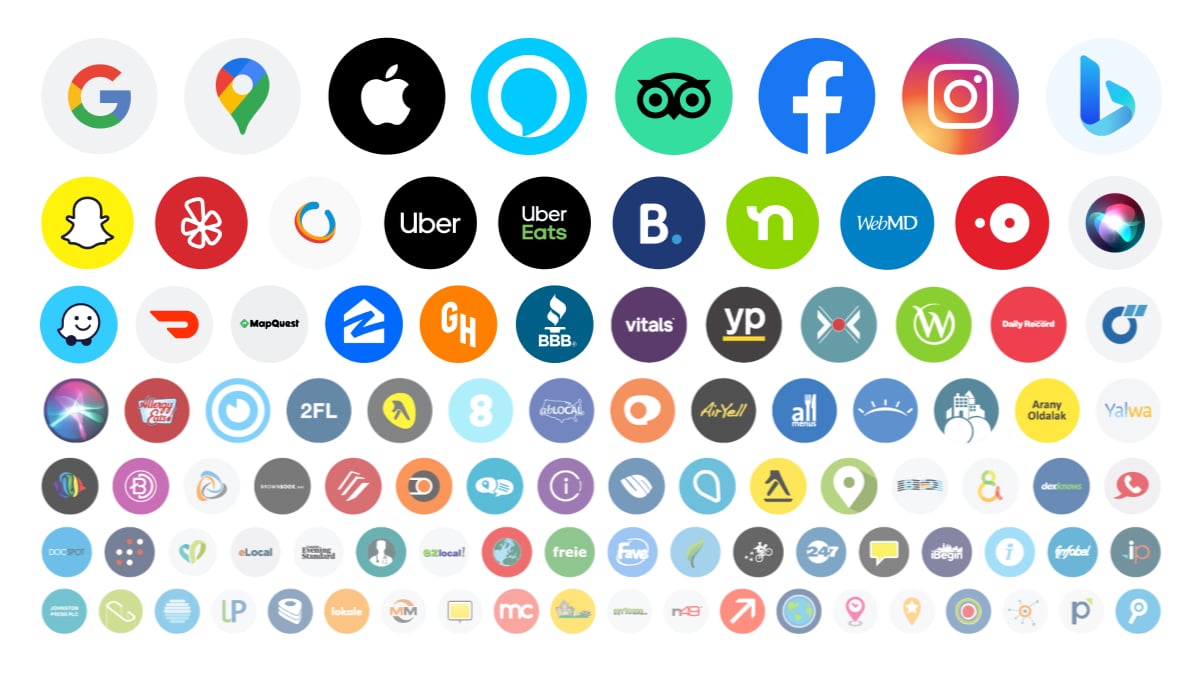3 Ways Marketers Drive Customer Engagement (and ROI) with Yext
3 Ways Marketers Drive Customer Engagement (and ROI) with Yext
Whether you’ve heavily invested in engaging your customers already or you’re just getting started, Yext can take your reach even further. Here are three strategies to drive digital engagement — and they’re easy to execute when you choose Yext to manage your interactions with global audiences.

Every year, businesses spend millions of dollars to improve customer engagement. In 2022, the Customer Solutions Engagement Market reached a $19.3 billion valuation — and by 2027, it's expected to hit $32.2 billion.
It's easy to see why this market is growing so quickly: according to a recent Twilio study, digitally mature brands saw their investments in digital customer engagement drive increases in revenue by an average of 123%. Even less digitally mature brands that made similar investments increased their revenue by 67%. The message for marketers is clear: higher customer engagement rates drive higher ROI on marketing efforts.
Whether you've heavily invested in engaging your customers already or you're just getting started, Yext can take your reach even further. Here are three strategies to drive digital engagement — and they're easy to execute when you choose Yext to manage your interactions with global audiences.

What is Customer Engagement?
Customer engagement is the ongoing interaction between a brand and its customers — before, during, and after the initial transaction. It encompasses various touchpoints too. It can include social media engagement, customer service interactions, personalized marketing experiences, and even user-generated content like reviews.
Customer engagement is the cornerstone of long-term business success. It drives repeat purchases and fosters brand loyalty by turning customers into advocates. High levels of customer engagement lead to increased customer retention, increased revenue, and a stronger brand reputation.
How Do You Measure Customer Engagement?
Brands measure customer engagement with a variety of tools. Typically, there isn't one single, key success metric. Instead, marketers use a variety of data to help them understand where, how, and when they have the most impact on their customers' experiences – and what tactics drive the most ROI.
As you decide on the metrics your team will use, it's important to pose the right questions: you shouldn't only ask, "Are we engaging customers digitally?" Instead, ask yourself and your team, "Where are we engaging customers? What is working, and what can we improve?"
These metrics will help you understand how your customers prefer to interact with your business and where you have the opportunity to increase engagement:
- Customer Lifetime Value (CLV): This measures the revenue a customer generates over the entirety of their relationship with your brand. In B2C, when a customer purchases from you once, you aim to earn their loyalty — and repeat sales. In B2B, you might look to customer retention: do customers typically renew their contracts, or do they turn to your competitors? Your CLV helps you understand how loyal customers are to your business, and can indicate whether your customers feel engaged.
- Net Promoter Score (NPS): Your NPS grades your customers' experiences with your brand. It indicates how likely they are to stay with you moving forward and how likely they are to recommend your brand or product to others. While your CLV measures customer loyalty in terms of revenue, your NPS measures whether your customers are likely to give you their loyalty at all, based on their experiences.
- Digital Engagement Rates: Engagement rate is the rate at which customers engage with your business. You can measure how customers engage with your brand digitally in many different ways. On your website, this can include page views, page depth, and average time engaged during each session. On social media, this could be your interactions per impression. Each channel will have unique metrics to measure engagement, so you'll want analytics that monitor your digital channels individually and holistically for the most accurate view.
These metrics give your team multi-dimensional insight into how your customers engage with your brand — and how satisfied they are when doing so. You can use this data to understand how your digital presence impacts revenue, and make optimizations where necessary.

Today, customers usually engage with your brand via both first- and third-party channels. Third-party channels are platforms outside of your website or app. These channels include your various social media platforms, your listings on search engines (like Google Business Profile or Apple Business Connect profiles), and even review aggregators like Yelp. There are also industry-specific third-party channels to consider: a restaurant may need to manage accounts on UberEats or OpenTable, whereas an insurance company may maintain their account with the Better Business Bureau.

Our research shows that, on average, business listings receive 2.7x more views than a brand's owned website. That's why your marketing team needs to make sure third-party channels are managed just as meticulously as your website.
Third-party channels are important because they expand your reach, exposing potential new customers to your brand. To have a well-managed presence on these channels, you need to present consistent, accurate information. When your content is uniform across channels, your audience trusts your brand. By managing these third-party channels well, you help customers find the information they need to convert, reducing friction in the buyer's journey. And because the information is easy to find and trust, they engage with your business — and have a better experience.
Some brands have trouble managing their third-party channels, though, and the reason why is clear: there's too many of them. And as the quantity of digital channels increases year over year, the expectation for marketing teams to manually manage each one is less attainable than ever.

With Yext Listings, marketers can manage the information on more than 200 third-party channels, thanks to the Yext Publisher Network. Marketers use Yext because they can be sure that their listings are always displaying the most up-to-date information — without managing each one individually. Lean marketing teams appreciate this "update once, update everywhere" approach, making it possible to manage hundreds of listings and locations from one platform. This reduces manual, repetitive work and creates consistent experiences across channels.
Your listings are often one of the first touchpoints in your customers' journeys. When customers can engage with your brand (even on third-party channels) and feel confident in the information you're presenting to them, you'll see higher digital engagement rates on these channels.

Your brand's duty to engage customers doesn't end when they land on your website. If you're dedicating resources to making sure customers find your business on third-party channels, you need to invest in giving them a great experience once they're on your site.
These experiences should help your audience be successful — whatever that may mean for them. Consider the following scenarios:
- Are they trying to learn more about your brand?
- Are they educating themselves through your industry-specific thought leadership?
- Are they looking to make a purchase?
- Do they need help answering support questions?
Your website is a way to share the information they seek, and you need to optimize it accordingly. One way to engage your audience is to build interactive experiences into your website, like quizzes, guided buying flows, search, and chat. In doing so, you can personalize your customer's experience, streamline their journey, and collect valuable zero-party data in the process.

By interacting with your users, you capture their attention and encourage them to engage more deeply with your brand. When you give customers the tools they need through interactive experiences, they will engage with your brand throughout their journey. This differentiates you, setting your brand apart from your competitors in your customers' minds.
With Yext Search, you give your customers the tools they need to find exactly what they're looking for. With site search, customers can easily find relevant information. This creates an interactive experience and promotes engagement with your brand throughout their journey. And with help site search, customers can self-serve — reducing time spent on hold with call centers and increasing satisfaction.
The impact search has on customer engagement can be quantified with your NPS. Some Yext customers have even seen a 45% lift in their NPS after implementing Yext Search. Search improves digital engagement rates on your website, which can impact NPS, CSAT, and even your customer's LTV — and ultimately, helps you show ROI on your marketing efforts.

Before you can engage your audience, you need to make sure your brand is discoverable. This doesn't require a new investment of time and resources, either. Think about optimizing your existing website and experiences for third-party search with SEO, then localize your content for customers across regions for maximum reach.
SEO is a means to improve search rankings, which brings your business more visibility — and consequently, more opportunities for engagement on both first- and third-party channels. By targeting specific keywords, you target customers based on their needs, intent, and stage in the buyer journey. In doing so, your content is more discoverable to those who are most likely to engage with it.

Yext Pages gives you the tools you need to optimize your website for search. Because all content in the Yext platform is structured, you can easily manage title tags, meta descriptions and other metadata. This helps search engines understand what your content is, and who it's meant for. Then, you can use analytics to track key customer engagement data points like search trends, click-through rates, session length, and more.
Another way to increase discoverability is through localization. Localization involves adapting your content to meet the language, cultural, and legal requirements of different markets. Localized content resonates more deeply with the audience it's made for. It's also more likely to be shared and engaged with among its target audience. Finally, it ranks higher in local search (like SERP for the query "restaurants near me") as well as location-based searches (like the query "restaurants in NYC").
Yext Pages offers multi-language profiles, so you can easily manage localized versions of your webpages. Your team can create alternative language profiles for every piece of content, and manage localized versions of content and media.
For example, your users can view a landing page in English, and they'll also easily find the Dutch version of the same page. This helps your team manage all your localized webpages from one platform. As a result, all your customers engage with the same information no matter what language it's in.
Yext Pages' built-in SEO and Localization features ensure that your audience can discover your content on whatever platform they search on, and wherever they're searching from.

Manage Customer Journeys and Maximize ROI
Customer engagement is every interaction between your brand and your customers — and it needs to be a focus on every channel, and during every stage of the buyer's journey.
With the Yext suite of solutions, you can manage your first- and third-party channels from one platform. You can create content, distribute it across all channels, analyze it, and optimize it. In doing so, you're maximizing customer engagement with every single digital interaction. It's time to see your brand from your customers' points of view. Empower them to engage with your organization the way they want to, no matter what channel or what stage of the journey they're on. Meet with Yext for a personalized demo today.

